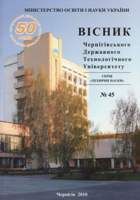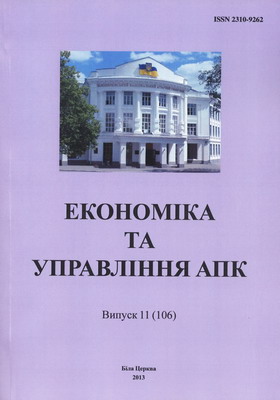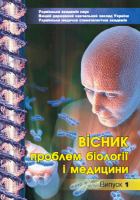
Бази даних
Наукова періодика України - результати пошуку
 |
Для швидкої роботи та реалізації всіх функціональних можливостей пошукової системи використовуйте браузер "Mozilla Firefox" |
|
|
Повнотекстовий пошук
| Знайдено в інших БД: | Реферативна база даних (6) |
Список видань за алфавітом назв: Авторський покажчик Покажчик назв публікацій  |
Пошуковий запит: (<.>A=Boyko S$<.>) | |||
|
Загальна кількість знайдених документів : 8 Представлено документи з 1 до 8 |
|||
| 1. | 
Boyko S. Problems of the removing mid spatial frequency features for producing large optics [Електронний ресурс] / S. Boyko, D. Dzyuba // Вісник Чернігівського державного технологічного університету. Серія : Технічні науки. - 2013. - № 3. - С. 136-140. - Режим доступу: http://nbuv.gov.ua/UJRN/Vcndtn_2013_3_21 | ||
| 2. | 
Khemio Arnes S. Comparison of sympathomimetic effectiveness in children with congenital heart diseases after cardiopulmonary bypass surgery [Електронний ресурс] / Arnes S. Khemio, L. Moshkivska, M. Teslar, V. Cheburahin, S. Boyko, V. Lazoryshynetz // Вісник серцево-судинної хірургії. - 2016. - № 3. - С. 83-86. - Режим доступу: http://nbuv.gov.ua/UJRN/shnp_2016_3_20 | ||
| 3. | 
Kalchenko V. V. Mathematical modeling of abrasive grinding working process [Електронний ресурс] / V. V. Kalchenko, А. М. Yeroshenko, S. V. Boyko // Науковий вісник Національного гірничого університету. - 2017. - № 6. - С. 76-82. - Режим доступу: http://nbuv.gov.ua/UJRN/Nvngu_2017_6_13 Purpose. 3D-modeling of working process of abrasive grinding of structural steel by unit grain and the individual grains under different conditions of overlap and altitude. Methodology. Mathematical modeling of working processes of abrasive grinding of structural steel on steel 45 using the finite element method was performed. An electro-corundum wheel with ceramic binder was used as an abrasive tool. To simulate the surface of the tool the matrix method of coordinate transformation is applied. Findings. Contact problem of tool interaction of grain and the workpiece has been solved. The problem of modeling the cutting process in a chip formation and, consequently, the formation of new surfaces has been solved. Distribution of plastic strain, temperature, shear strain, strain rate, internal pressure, charts of cutting forces and kinetic energy were obtained. Originality. A general model of the tool surface whose calculation in MathCAD environment made it possible to obtain a graphical representation of various instrumental surfaces was obtained. As a result of mathematical modeling of working process abrasive grinding by individual grains with different variants of overlapping grains, characteristic curves of cutting forces and other parameters of the working process were obtained. Practical value. The results can form the basis of new structural steel processing technologies, developing management methodology for workflow of abrasive grinding. | ||
| 4. | 
Kalchenko V. V. Determination of instan-taneous temperature in the cutting zone during abrasive processing [Електронний ресурс] / V. V. Kalchenko, А. М. Yeroshenko, S. V. Boyko, P. L. Ignatenko // Науковий вісник Національного гірничого університету. - 2019. - № 5. - С. 35-40. - Режим доступу: http://nbuv.gov.ua/UJRN/Nvngu_2019_5_8 | ||
| 5. | 
Kalchenko V. V. Development and research of thеrmоplаstiс methods for hardening details [Електронний ресурс] / V. V. Kalchenko, А. М. Yeroshenko, S. V. Boyko, P. L. Ignatenko // Науковий вісник Національного гірничого університету. - 2020. - № 2. - С. 53-60. - Режим доступу: http://nbuv.gov.ua/UJRN/Nvngu_2020_2_11 Purpose. Clarification of the influence of the temperature factor on the quality of the machined surface and the calculation of the contact area of the "workpiece-indenter" depending on the design features of the tool and the machined surface, in order to use the results obtained when assigning processing modes. Methodology. Experimental studies on the influence of the temperature factor on the hardening process were carried out at a specialized facility developed at the Department of Engineering and Woodworking Technology of CNUT (Chernihiv National University of Technology). The three-roller pneumatic device was mounted on a support of the lathe-screw machine model 1K62. Workpieces were mounted on a special mandrel in a three-jaw chuck. The spindle speed was set using an electronic tachometer; the pressure on the rollers was recorded by a pressure gauge. Before the rolling, the workpiece was kept in a laboratory electric furnace, the preheat temperature was recorded by a logometer. Since the surface quality of surface plastic deformation (SPD) treatment with heating depends on a large number of factors, a central second-order rotatable composite layout was used to obtain the multifactor model. On the basis of a priori information and the results of the previous experiments, the feed (S, mm/rev), pressure (P, H) and preheat temperature (T, <^>o | ||
| 6. | 
Boyko S. Current trends in debt policy of city councils and directions of its improvement [Електронний ресурс] / S. Boyko, O. Dragan, K. Tkachenko // Економіка та управління АПК. - 2020. - № 1. - С. 56-67. - Режим доступу: http://nbuv.gov.ua/UJRN/ecupapk_2020_1_8 | ||
| 7. | 
Kalchenko V. V. Determination of the cutting force components while milling cylindrical surfaces with an oriented tool [Електронний ресурс] / V. V. Kalchenko, S. D. Tsybulya, A. V. Kolohoida, Ye. Yu. Sakhno, S. V. Boyko // Науковий вісник Національного гірничого університету. - 2021. - № 2. - С. 82-88. - Режим доступу: http://nbuv.gov.ua/UJRN/Nvngu_2021_2_14 Purpose. Construction of a general modular mathematical spatial model of the removal allowance process and shaping when milling round surfaces of rotation, such as camshaft necks, cylindrical surfaces of gearbox shafts and others. Determination of the components of the cutting forces when machining with crossed axes of the milling cutter and part in order to use the results when assigning machining modes. Methodology. Theoretical development of a modular mathematical model of the removal allowance process and shaping during milling of cylindrical surfaces was carried out using a matrix apparatus for converting coordinate systems. Unified modules were developed: instrumental, orientation and shaping, which allowed us to describe the processing of the part more clearly. All calculations were performed in the mathematical package Mathcad. Using the functions available in the package, a graphical representation of the mathematical model of the tool and machined surfaces was obtained. Using the logical blocks developed in the program, the characteristics of the treated surface were investigated, such as roughness in the axial and radial planes. The influence of the tool orientation angle and the number of cutter teeth on the roughness of the machined surface was investigated. The known formulas for calculating the cutting forces during milling are specified. Findings. A general modular mathematical spatial model is constructed of the removal process of an allowance and formation at milling by the oriented tool of round surfaces of rotation, such as necks of camshafts, cylindrical surfaces of shafts of transmissions and others. The roughness parameters of the treated surface are determined. The outflow of the tool characteristics and the angle of its orientation on the geometric roughness in the axial and radial sections is investigated. The area of the layer cut off by one tooth of a mill is defined. The calculation formulas are specified for finding the components of cutting forces during milling. Originality. A modular spatial model of the process of milling cylindrical surfaces with an oriented tool is proposed, on the basis of which the components of cutting forces are calculated, which can be used in designing new tools and improving machining conditions by the existing ones. Practical value. Based on the use of modern computer facilities and software, the developed calculation program allows controlling the process of forming cylindrical surfaces during their milling with an oriented tool. It also allows predicting the initial machining accuracy by determining the parameters of geometric roughness in axial and radial sections. This makes it possible to choose the optimal tool orientation angle, milling cutter parameters and cutting modes to achieve high productivity and processing quality. | ||
| 8. | 
Kalyta V. I. Experience of anaesthetic management and intensive care in patients with single ventricle physiology [Електронний ресурс] / V. I. Kalyta, I. V. Dziuryi, S. M. Boyko, Ia. P. Truba, O. I. Plyska, V. V. Lazoryshynets // Вісник проблем біології і медицини. - 2023. - Вип. 4. - С. 199-209. - Режим доступу: http://nbuv.gov.ua/UJRN/Vpbm_2023_4_30 | ||
 |
| Відділ наукової організації електронних інформаційних ресурсів |
 Пам`ятка користувача Пам`ятка користувача |